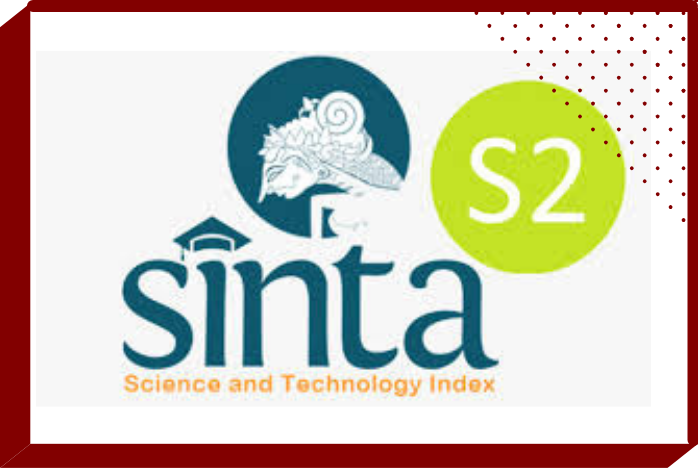Karakterisasi dalam Simbolisasi Hewan pada Peribahasa Madura
 Abstract views: 56
,
Abstract views: 56
,
 PDF downloads: 34
PDF downloads: 34
Abstract
This study is based on the assumption that symbols in society represent the way of thinking of the society. With this background, the purpose of this study is to describe the use of animal symbols and animal characterization in Madurese proverbs. With the basic theory of semiotics, this study is a descriptive-qualitative study. Data collection was carried out by document study. Data analysis used content analysis methods/techniques. Based on the results of the study, it was concluded that the animal symbols in Madurese proverbs include domestic animals, both livestock, pets and non-pets and wild animals. Animals that consistently symbolize positive and negative character values and tend to continue to show that these characters are manifestations of the subconscious of the Madurese people in viewing animal symbols in culture. Animals that have negative character values are in line with expressions such as curses, praise, etc. that use animal symbols.
Downloads
References
Bastari, & Fiandarti, Y. E. (2009). Kosa Kata Bahasa Madura Lengkap. Surabaya: Karya Simpati Mandiri.
Eco, U. (1976). Theory of Semiotics. Bloomington: Indiana University Press.
Herawati, N. (2015). Well Being Masyarakat Madura. Proceeding Seminar Nasional Psikologi Sosial & Budaya “Paradoksal dalam Ruang Sosial,” 13–18. Bangkalan: Program Studi Psikologi Fakultas Ilmu Sosial dan Ilmu Budaya Universitas Trunojoyo Madura.
Ho-Abdullah, I. (2011). Analisis Kognitif Semantik Peribahasa Melayu Bersumberkan Anjing (Canis Familiaris). GEMA Online Journal of Language Studies, 11(1), 125–141.
Indrawati. (2021). Leksikon Nama Hewan dan Tumbuhan pada Peribahasa Bakumpai: Kajian Semantik Kognitif. UNDAS: Jurnal Hasil Penelitian Bahasa Dan Sastra, 17(2), 211–226.
Indrawati, D. (2006). Makian dalam Bahasa Madura: Kajian Metabahasa Semantik Alami. Linguistik Indonesia, 8(2), 145–155.
Khotimah, K., & Pribadi, F. (2023). Kajian Makian dalam Interaksi Sosial Pemuda Madura melalui Lensa Sosio-Ekolinguistik. Dialektika: Jurnal Bahasa, Sastra, Dan Budaya, 10(2), 154–168.
Kiliaan, H. N. (1904). Madoereesch-Nederlandsch Woordenboek Eerste Deel. Leiden: E.J. Brill.
Kiliaan, H. N. (1905). Madoereesch-Nederlandsch Woordenboek Tweede Deel. Leiden: E.J. Brill.
Krippendorff, K. (2004). Content Analysis: an Introduction to Its Methodology. California: Sage Publication.
Makki, M. I., Aflahah, A., & Albaburrahim, A. (2023). Kecerdasan Sosial dalam Ca’-Oca’an Madura Kajian Hermeneutik Bersusun. Ghancaran: Jurnal Pendidikan Bahasa Dan Sastra Indonesia, 5(1), 212–224.
Masmadia, A. S. (2018). Makna Perhiasan Emas bagi Kalangan Wanita Madura di Kota Surabaya. Surabaya.
Muhadjir, N. (2007). Metodologi Keilmuan: Paradigma Kualitatif, Kuantitatif, dan Mixed (5th ed.). Yogyakarta: Rake Sarasin.
Rifai, M. A. (2007). Manusia Madura: Pembawaan, Perilaku, Etos Kerja, Penampilan, dan Pandangan Hidupnya seperti Dicitrakan Peribahasanya. Yogyakarta: Pilar Media.
Wiyata, A. L. (2002). Carok Konflik Kekerasan dan Harga Diri Orang Madura. Yogyakarta: LkiS.
Copyright (c) 2024 GHANCARAN: Jurnal Pendidikan Bahasa dan Sastra Indonesia

This work is licensed under a Creative Commons Attribution-ShareAlike 4.0 International License.
Ghancaran: Jurnal Pendidikan Bahasa dan Sastra Indonesia uses an Open Access Policy under the Creative Commons Attribution-ShareAlike 4.0 International License. Authors publishing in this journal agree to the following terms:
- Ghancaran Journal holds the copyright and grants the journal rights for first publication with the work simultaneously licensed under a

The work is distributed under Creative Commons Attribution-ShareAlike 4.0 International License which allows others to share, copy, and redistribute the material in any media or format and adapt, remix, change, and develop the material even for commercial purposes, as long as it is stated credit and license derivative works under similar terms. - Authors may make additional contractual arrangements for non-exclusive distribution of the journal's published work version.
- Authors are permitted to post their work online (e.g., in institutional repositories or on their websites) before and during submission, as doing so may lead to productive exchange.


















